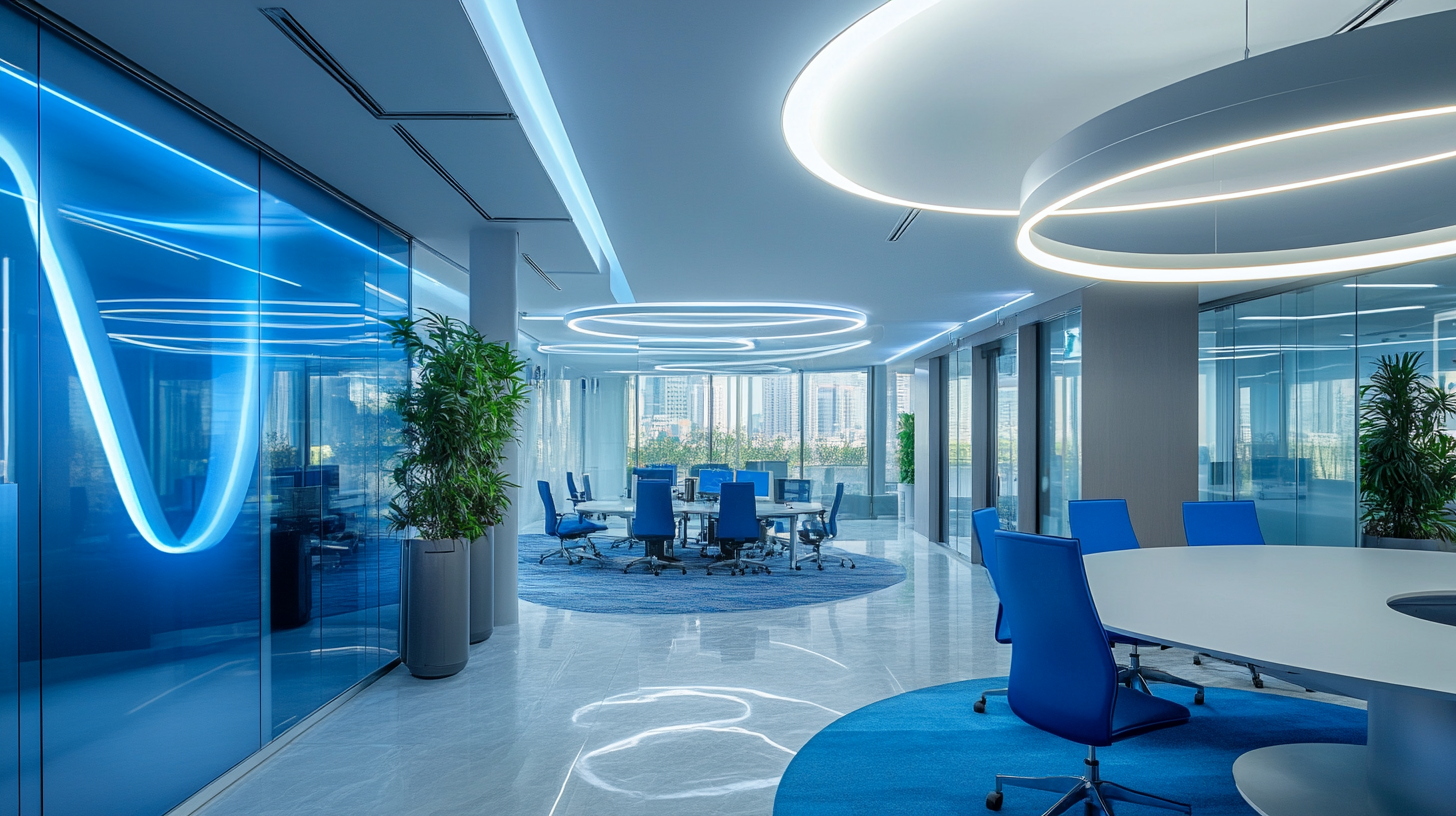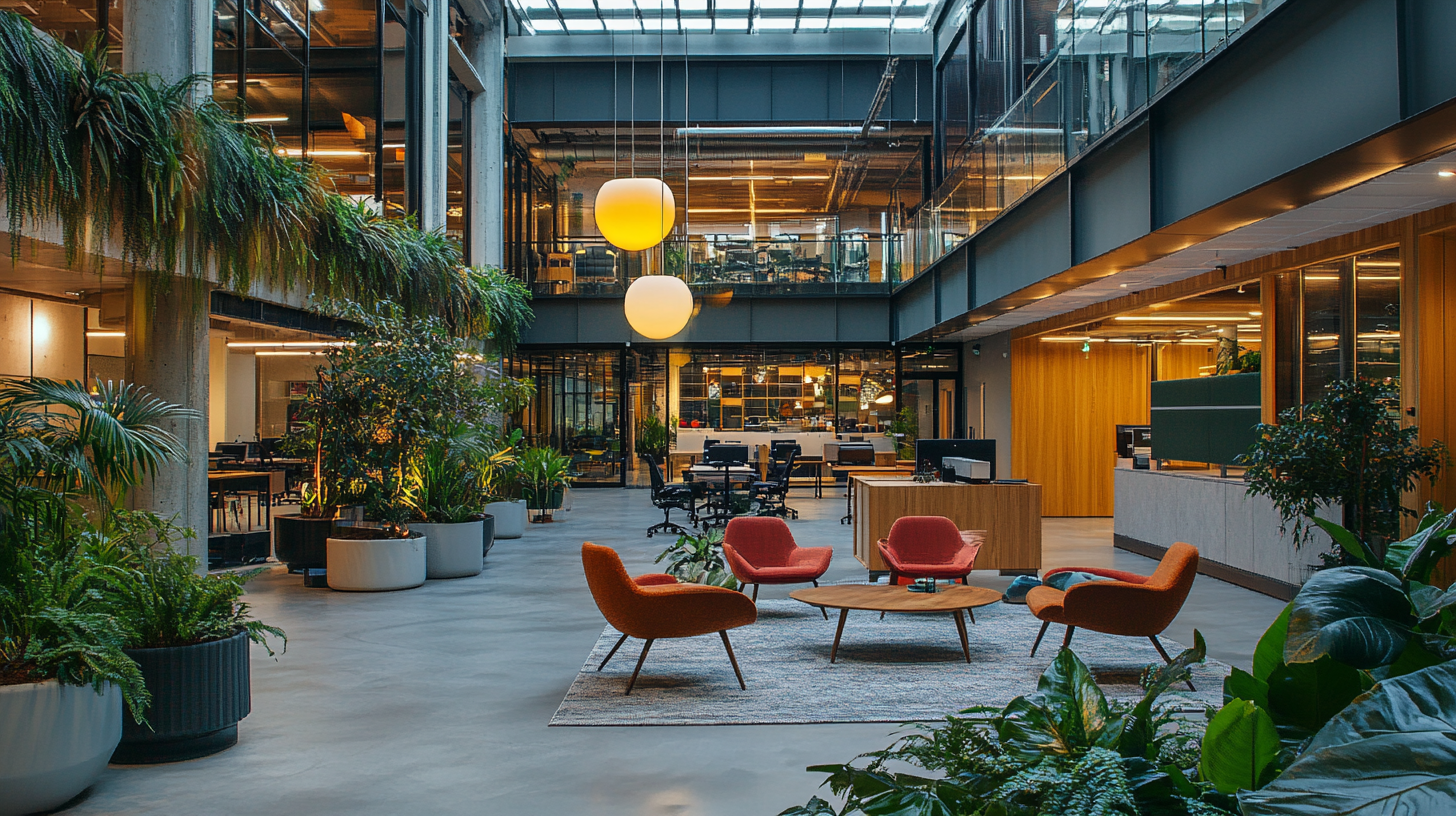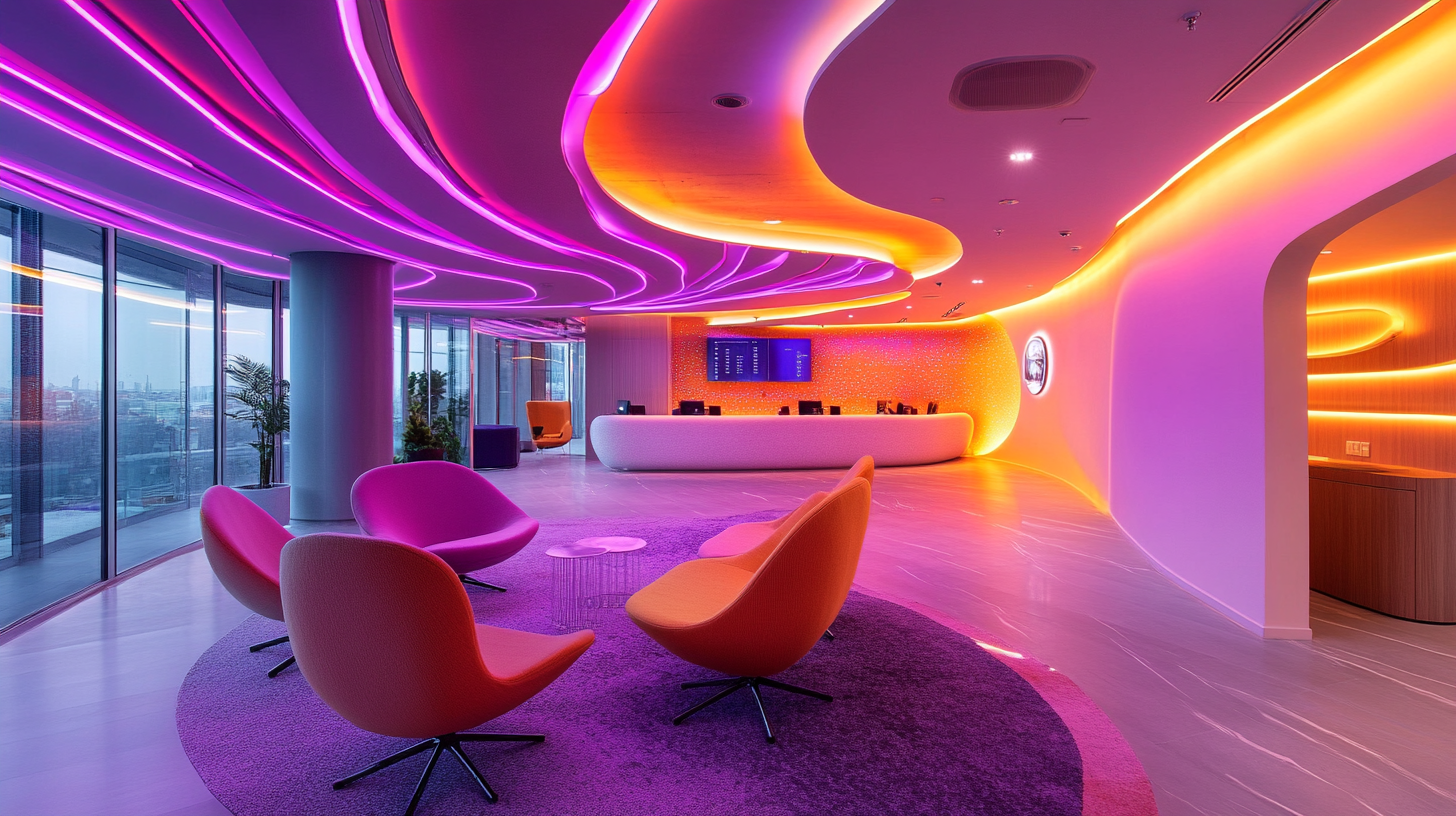
The landscape of office lighting is undergoing a transformative shift as global buyers increasingly prioritize sustainability, employee well-being, and technological integration. According to a report by Research and Markets, the global office lighting market is projected to reach $25.5 billion by 2025, growing at a CAGR of 4.8%. This upward trend underscores the industry's responsiveness to evolving workplace dynamics and the demand for innovative lighting solutions that enhance productivity and comfort.
Moreover, the Efficient Lighting Initiative highlights that up to 40% of a commercial building's energy usage can be attributed to lighting. This statistic reinforces the urgency for businesses to invest in energy-efficient office lighting systems and explore smart technologies that not only reduce operational costs but also contribute to a healthier work environment. As companies navigate the complexities of modern office design, understanding these key trends in office lighting will be crucial in making informed choices that align with both functional needs and sustainability goals.

The office lighting landscape is undergoing a significant transformation, driven by emerging technologies that are reshaping how spaces are illuminated. According to a recent report by Research and Markets, the global smart lighting market is expected to reach $70 billion by 2026, growing at a compound annual growth rate (CAGR) of over 20%. This growth reflects a shift towards more intelligent solutions that not only enhance productivity but also contribute to energy efficiency and sustainability. One of the standout trends is the rise of Human-Centric Lighting (HCL), which emphasizes the biological effects of light on human well-being. Research from the Illuminating Engineering Society (IES) indicates that implementing HCL can improve mood and productivity by up to 20%. By utilizing tunable white LED technology, office lighting can now adapt to the time of day and the specific needs of workers, thereby mimicking natural sunlight and promoting a healthier work environment. Additionally, the integration of IoT (Internet of Things) technology into office lighting systems allows for networked solutions that can be monitored and adjusted remotely. According to a study by Gartner, more than 80% of enterprises are expected to leverage IoT by 2025. This connectivity not only facilitates energy-saving practices but also provides valuable data insights that can help optimize lighting design and reduce operational costs by approximately 30%. As global buyers navigate these evolving technologies, the emphasis on smart, adaptable, and health-focused lighting solutions will undoubtedly redefine the modern workspace.

In today’s fast-evolving work environment, sustainability in office lighting is emerging as a crucial aspect for global buyers. According to recent reports, over 80% of office workers are more likely to choose employers who prioritize environmentally friendly practices. This shift not only reflects rising consumer awareness but also presents an opportunity for businesses to enhance their brand image through energy-efficient lighting solutions.
The demand for smart lighting systems is on the rise, with estimates projecting that the global smart lighting market will reach $100 billion by 2026. This growth is driven by innovations showcased at events like the Hong Kong Autumn Lighting Fair, where cutting-edge technologies highlight the integration of sustainability in urban infrastructures. By implementing such systems, companies can reduce energy consumption by up to 75%, creating substantial cost savings in addition to reducing their carbon footprint.
Moreover, the conversation around sustainable office ideas is gaining momentum, with companies encouraged to think globally while acting locally. Adopting practices such as utilizing LED fixtures, installing daylight sensors, and enhancing natural light access can foster a healthier workplace while contributing to broader environmental goals. As businesses evaluate their office spaces, integrating sustainable lighting options not only aligns with corporate responsibility objectives but also boosts employee morale and productivity.

In the evolving landscape of office lighting, human-centric design has emerged as a pivotal consideration for global buyers aiming to enhance workplace environments. Research indicates that well-designed lighting not only boosts employee productivity by up to 20% but also plays a significant role in improving overall well-being. According to a report by the International Well Building Institute, appropriate lighting can reduce eyestrain and headaches, contributing to lower absenteeism and fostering a healthier workplace atmosphere.
A critical aspect of human-centric design is the focus on natural light and circadian-friendly solutions. A study from the Pacific Northwest National Laboratory revealed that exposure to daylight during working hours could increase employee satisfaction by as much as 15%. This suggests that integrating innovative daylighting techniques, such as light shelves and larger windows, could significantly enhance the workplace experience. Moreover, the use of tunable white LEDs allows for dynamic adjustments throughout the day, aligning with the body's natural rhythms and further promoting cognitive performance.
Furthermore, the shift toward sustainable and energy-efficient lighting solutions complements the tenets of human-centric design. The U.S. Department of Energy reported that LED lighting can reduce energy consumption for lighting by up to 75% compared to traditional incandescent bulbs. This not only reduces operational costs but also aligns with global sustainability goals, attracting environmentally conscious companies aiming to enhance their corporate social responsibility profile. As the demand for smarter, more adaptable lighting continues to rise, prioritizing human-centric principles will be key to shaping the future of office environments.

The future of office lighting is increasingly shaped by smart lighting innovations that drive efficiency and productivity. One notable advancement is the integration of AI-driven technologies in lighting systems. According to recent industry reports, the smart lighting controls market is projected to grow significantly, with estimates indicating a compound annual growth rate (CAGR) of around 20% over the next five years. This growth underscores the importance of adopting energy-efficient solutions that not only reduce operational costs but also enhance the working environment.
In the realm of energy efficiency, smart lighting controls can contribute to an impressive 50% reduction in heating, ventilation, cooling, and lighting energy costs across commercial buildings globally. These systems enable real-time monitoring and adjustment of lighting based on occupancy and natural light levels, ensuring optimal usage while minimizing waste. The continued evolution of LED technology further complements these innovations, as manufacturers are developing new solutions that offer increased longevity and lower energy consumption, including advancements in LED drivers and sensors.
Moreover, upcoming exhibitions like the LED Expo Mumbai 2025 highlight the industry’s focus on smart and efficient lighting solutions, featuring innovations that cater to diverse applications. The emphasis on wellness and environmental considerations in lighting design is gaining traction, advocating for healthier workplace environments that promote employee productivity. As global buyers seek to invest in these transformative technologies, the push towards smarter office lighting is not merely a trend but a strategic priority for organizations aiming to enhance operational effectiveness.
The shift towards hybrid work environments has transformed the landscape of office lighting, necessitating a re-evaluation of how light affects productivity and well-being. According to a report by the International WELL Building Institute, approximately 82% of employees view lighting as crucial to their overall satisfaction at work. As organizations adopt a blend of remote and in-office work, the need for adaptable office lighting becomes paramount.
In these hybrid spaces, flexibility is key. Adaptive lighting solutions allow businesses to alter the intensity and color temperature based on the time of day or specific tasks. A study by the Lighting Research Center indicates that employees exposed to dynamic lighting conditions are 24% more productive than those in static environments. This highlights the potential for tailored lighting schemes that not only enhance individual productivity but also foster collaborative efforts during in-person workdays.
Moreover, the emphasis on sustainability continues to shape office lighting trends. The Global Lighting Association reports that up to 40% of office energy consumption is attributed to lighting. Therefore, integrating energy-efficient technologies such as LED lighting and smart controls can significantly reduce operational costs while enhancing comfort. As the hybrid work model evolves, strategically designed lighting that prioritizes flexibility, productivity, and sustainability will play a critical role in meeting the diverse needs of global buyers.
Let us help you get started with our superior LED lighting products.
Get all the latest news from BrightLED.
Copyright © Bright LED. All rights reserved.
STAY CONNECTED

